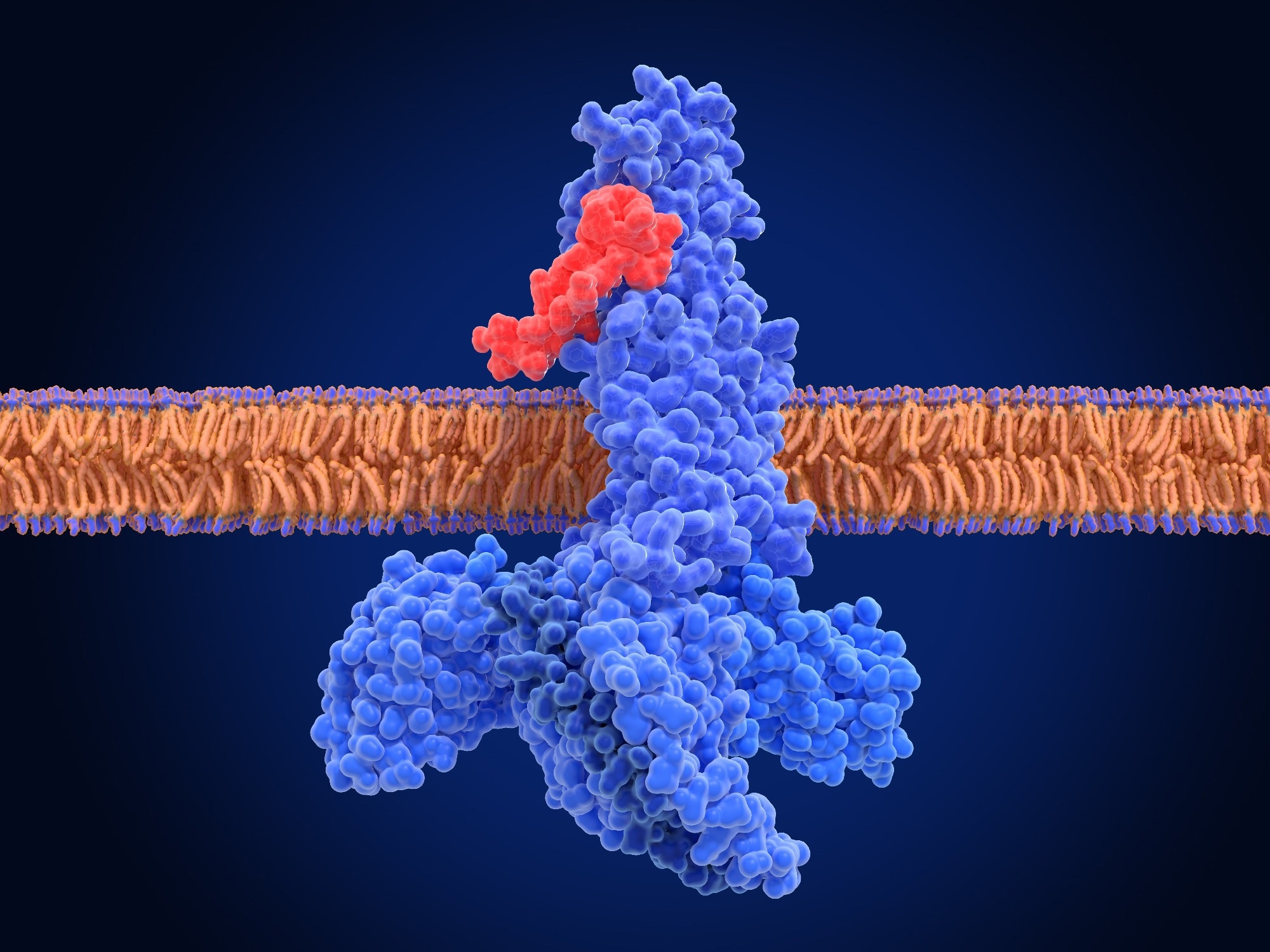Reviewed by Lauren HardakerOct 17 2025
Chemistry researchers at the University of Utah have discovered an enzyme called PapB. This enzyme is capable of "tying off" therapeutic peptides, drugs resembling proteins, into compact rings, a process termed macrocyclization.
 Image credit: Juan Gaertner/Shutterstock.com
Image credit: Juan Gaertner/Shutterstock.com
This enzymatic capability may assist drug developers in creating more potent and enduring versions of GLP-1 medications, including semaglutide, the active component in Ozempic and Wegovy, commonly used for the treatment of diabetes and obesity, as indicated by the study.
Co-author Karsten Eastman explains that forming cyclic peptides is a crucial phase in drug design. These ring structures enhance drugs' stability, prolong their duration in the body, and improve their efficacy.
Peptides themselves can be extremely difficult to work with because they have a lot of reactive chemical handles. But this is what makes them so great in biology. You can get the type of reaction that you want in the body, but it’s difficult to modify them in hyper-specific ways. What we show in the study is an enzymatic method—using a tiny molecular machine to modify or hyper-modify peptides in extremely controlled ways—enabling what we believe will be next-generation peptide therapeutics.
Karsten Eastman, Research Associate, Department of Chemistry, University of Utah
Founders of the Year
Eastman and Bandarian, who coauthored the study, established Sethera last year to commercialize the findings they made at the university, supported by funding from the National Institutes of Health. The team’s contributions were recognized last week by the U’s Technology Licensing Office, which named them the 2025 Founders of the Year for their development of the PolyMacrocyclic Peptide (pMCP) Discovery Platform.
Conventional chemical techniques for closing peptide rings are costly and challenging to execute later in drug development. The newly identified enzyme provides a more straightforward and cleaner alternative. It naturally creates a precise chemical bond that closes the peptide chain into a ring without the additional “leader” sequences most enzymes need to identify their targets.
The recent research, published in ACS Bio & Med Chem Au, outlines how the researchers employed a "radical SAM" (S-adenosyl-L-methionine) enzyme named PapB to link the terminals of GLP-1–like peptides via a sulfur-carbon bond, referred to as thioether. Experimental evaluations validated the creation of these rings, even when the peptides contained nonstandard components commonly present in various contemporary incretin medications used in diabetes management.
We were surprised by how flexible the enzyme turned out to be. It didn’t need the usual leader sequence, and it still worked even when we swapped in unusual amino acids. That combination of precision and adaptability makes PapB a practical tool for peptide engineering.
Jake Pedigo, Study Lead Author and Graduate Student, University of Utah
A Plug-and-Play Biocatalyst
In earlier studies, the laboratory had already described this technique for tying off peptides. Their most recent findings provide proof of concept that illustrates the potential utility of this method. The researchers utilized PapB on three GLP-1-like peptides, and in every instance, the enzyme transformed the linear peptide into a cyclic form. These outcomes indicate that PapB may function as a versatile biocatalyst for modifying peptides during the later stages of drug development.
“The new study ties together a significant amount of research in a new way, enabling an already on-the-market therapeutic to have a specific type of modification that no one has been able to achieve, especially using an enzymatic method,” said Eastman.
The team's approach may also enhance peptide stability, which could, in turn, improve their therapeutic efficacy.
The human body is highly efficient at recycling proteins, which is facilitated by proteases, enzymes that break down peptides into their individual amino acids.
“You have these peptides that could have a great biological response, but if that biological response only lasts minutes, then all of a sudden you don’t have a good therapeutic. By using this enzymatic method to tie off the ends, we are essentially hiding the peptide from some of the most common proteases in the body—which are what break down peptides. This would enable the longer half-life,” said Eastman.
The research illustrates that PapB functions independently of the leader sequence, indicating its applicability to diverse peptides. This could lead to the development of novel therapeutic designs that are more robust, precisely targeted, and simpler to produce.
Big Pharma’s GLP-1 backbones are already excellent. What we’re adding is a clean, late-stage enzymatic step that can make those molecules work even harder. By installing a small, well-defined ring, we can tune how long the drug lasts, how stable it is, and even how it signals—all while staying compatible with the complex structures already in use.
Karsten Eastman, Research Associate, Department of Chemistry, University of Utah
Source:
Journal reference:
Pedigo, K. J., et al. (2025) Leader-Independent C-Terminal Modification by a Radical S-Adenosyl-l-methionine Maturase Enables Macrocyclic GLP-1-Like Peptides. ACS Bio & Med Chem Au. doi.org/10.1021/acsbiomedchemau.5c00152